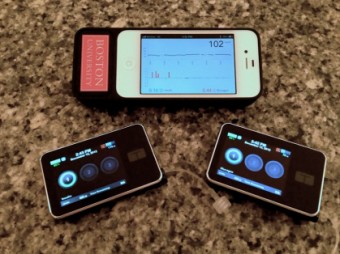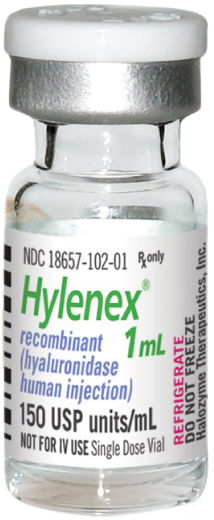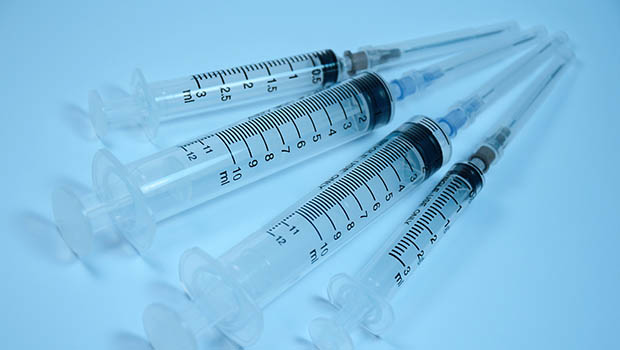ADA Scientific Sessions 2013: A Pause Before The “Next Big Thing”

Every year since 1940, the American Diabetes Association has brought doctors, researchers, clinicians, and industry together for an annual event they call the Scientific Sessions. The name is apt. This is a serious gathering, not an excuse to party, and the titles of many presentations would leave those who didn’t fare well in their high school science classes struggling to pronounce, let alone understand, what was being discussed. Still, it’s the biggest diabetes event in the world every year, and very much worth attending for those who want to chart the progress of diabetes research, therapy, technology, and science. It’s also one of the most important opportunities for the pharmaceutical and device industries to reach a lot of potential prescribers through exhibits and sponsored presentations.
Most ordinary people with diabetes – the objects of all this attention and investment – don’t come to ADA, so this is Insulin Nation’s first opportunity to report on the highlights and to share impressions from the 73rd gathering just concluded in Chicago. The bulk of this article was written by Gary Scheiner, a CDE who is also founder and owner of Integrated Diabetes Services (www.integrateddiabetes.com). Gary is a frequent contributor to Insulin Nation and is a member of our Advisory Board. Gary’s thoughts on the presentations and sessions he attended are accompanied by “Gary’s Take” notes from him in boldface type at the end of most sections. The portion of this story written by him, plus additional thoughts, can also be viewed on his Web site at IntegratedDiabetes.com.

This is a long report, so those pressed for time can skip to the sections most interesting to them. The section headings are below.
The Big Picture
Artificial Pancreas Development
Diabetes and Pregnancy
Exercise Experiments
Diabetes and Puberty
Continuous Glucose Monitors
Kids and Pumps
Dietary Supplements
Products on the Horizon
The Big Picture
The big news was, in fact, that there was no breakthrough news on the therapy or pharmaceutical fronts. In fact, the exhibit hall at the meeting was considerably smaller than in past years, due in part to the complete absence of both Bayer Diabetes and Abbott Diabetes Care. Interest in artificial pancreas projects is growing, as proved by an increased number of sessions devoted to reports on various developments in the field. And, the two biggest announcements during the conference were both directly tied to APs, one in the Johnson & Johnson/Animas/Lifescan pipeline and the other from Medtronic Diabetes.
The lack of breakthrough drug development is not surprising; according to Fierce Pharma, a respected website read closely by pharmaceutical and device industry executives and researchers, the FDA has approved only 13 new diabetes meds since 2000, while more than 60 new cancer treatments have been cleared in the same time frame. Fierce’s post-meeting ADA report also pointed out that diabetes drugs require long, large, and expensive clinical trials and a host of sub-trials to deal with an increased threat of heart disease. So, while almost all of the major drug companies are developing new diabetes meds, don’t expect any of them to show up soon.
The elephant in the room at this year’s meeting was the looming July 1, 2013 beginning of a new era in diabetes treatment reimbursement. That’s when Medicare payments to providers for a vial of 50 test strips drops to $10.47 per vial, representing about a 70% cut in revenue on products that have been the profitable bread and butter for diabetes device makers for more than a decade. Private insurers are sure to follow suit and cut their reimbursement rates for people with diabetes as well. With the easy money from test strips gone, the focus now turns to insulin and insulin-enhancing products as a potential profit leader.
Other noteworthy takeaways were an increased number of sessions devoted to bariatric surgery as a Type 2 cure, and a growing emphasis on hypoglycemia and glucagon, “the Rodney Dangerfield of hormones,” as one biopharma executive puts it. Expect to see several new approaches to hypos on the market in the next 3-4 years, perhaps sooner.
Artificial Pancreas Development

Having demonstrated the safety and efficacy of its low glucose suspend feature (an important first step in bringing their closed loop technology to market), Medtronic’s Veo insulin pump and Enlite glucose sensors are on the verge of FDA approval in the U.S. In its closed loop research, Medtronic has also devised an innovative hyperglycemia correction feature based on current basal rates.
In closed loop systems using the Animas Ping insulin pump and (previous generation) Dexcom 7+ CGM, 20 adults had an average blood sugar of 135 mg/dl. Most participants had no glucose levels above 180. Overnight glucose levels were consistently within target ranges.
Studies involving the OmniPod and Dexcom found that glucose levels could be held very steady overnight but were peaking quite high after breakfast. Similar results were produced in closed loop studies conducted in Spain.
In a fully patient-controlled home use closed-loop system developed in Israel, the user had the ability to switch from “manual control” to “fully automated” control at the flip of a switch. The automated control (where a computer algorithm determined all insulin deliveries) reduced time spent in a hypoglycemic range by 50% and significantly increased the percentage of time spent within target ranges.
Many experts believe that an effective closed loop system will require the use of multiple hormones. A JDRF-funded group in Portand, Oregon has been using two OmniPod systems simultaneously (one with aspart rapid-acting insulin, one with glucagon) and the Dexcom sensor. Rapid infusion of glucagon when glucose was dropping reduced the incidence of hypoglycemia to near 0%. However, post-meal glucose spikes continued to be an issue. BG rose an average of 90mg/dl after breakfast, 20mg/dl after lunch, and 60mg/dl after dinner. Researchers concluded that manual pre-bolusing at mealtimes will be needed to eliminate the peaks. This was validated in separate research (using OmniPod and the Abbott Navigator CGM). Manually pre-bolusing approximately 50% of the normal meal bolus lowered the overall average glucose level by 10-15 mg/dl.
The relatively slow action of subcutaneously infused insulin has been a major limiting factor in preventing post-meal spikes. Investigators at the Sansum Diabetes Research Center In California have studied the use of intraperitoneal insulin delivery, whereby a catheter infuses the insulin into the abdominal cavity rather than the fatty layer. They found that this route of delivery greatly accelerates insulin action to near I.V. insulin levels. Using the Dexcom 7+ sensor and Spirit insulin pump with intraperitoneal delivery, they were able to reduce post-meal peaks by 15 to 105 mg/dl.
Gary’s Take
As CGM quality and computer algorithms continue to improve, the pathway to a cure for type-1 diabetes appears to be headed in a technological rather than biological direction. Whole-organ pancreas transplant outcomes are improving due to better immunosuppression therapies, but the availability of pancreata continues to be a major limiting factor.
Diabetes and Pregnancy
 Closed loop studies with pregnant type-1 women in the United Kingdom showed that while insulin requirements change dramatically during pregnancy, the patterns (i.e. peak/valley times) do not. It was also shown that because CGM sensors become somewhat less accurate during exercise conditions, sensor performance may suffer during labor. Frequent fingerstick testing during labor is recommended.
Closed loop studies with pregnant type-1 women in the United Kingdom showed that while insulin requirements change dramatically during pregnancy, the patterns (i.e. peak/valley times) do not. It was also shown that because CGM sensors become somewhat less accurate during exercise conditions, sensor performance may suffer during labor. Frequent fingerstick testing during labor is recommended.
Because insulin absorption becomes slower as pregnancy progresses, earlier mealtime bolusing and/or post-meal walking may be necessary to reduce post-meal peaking in later phases of pregnancy.
Staff at the Joslin Diabetes Center in Boston found that preeclampsia (elevated BP & proteinuria in the later stages of pregnancy, sometimes referred to as toxemia) is much more common in women whose A1c was elevated at the time of conception and during the first trimester. High glucose levels early in pregnancy may interfere with the development of a healthy placenta. A poorly developed placenta secretes endothelial growth factors that contribute to preeclampsia.
Further confirmation has been received that insulin lispro (Humalog) does not pass into cord blood and does not affect a developing baby. No increase in complication risk has been found in women using lispro.
Gary’s Take
Insulin aspart (Novolog) has very similar properties to lispro and has been used for many years without reports of problems. Both are now considered “class B” in terms of safety during pregnancy. Insulin glargine (lantus) has not been studied intensively enough to warrant class B status, but small studies and countless individual reports have suggested its safety and efficacy. Unfortunately, many clinicians continue to recommend a known hindrance to quality metabolic control (multi-dose NPH) rather than use glargine which carries a very small potential risk but well-established benefits. I prefer to educate the patient on the benefits/risks so that she can make her own educated decision.
Exercise Experiments
 Researchers at the University of Tennessee found that exercise is a more powerful tool for improving insulin sensitivity than metformin. The combined impact of exercise and metformin has additional benefits (better than taking metformin alone), but adding metformin to the regimen of those already exercising leads to a decrease in improvement in insulin sensitivity. It is unclear why this is the case, but it speaks volumes about the importance of physical activity, particularly for those with Type 2 diabetes as well as insulin-resistant Type 1s.
Researchers at the University of Tennessee found that exercise is a more powerful tool for improving insulin sensitivity than metformin. The combined impact of exercise and metformin has additional benefits (better than taking metformin alone), but adding metformin to the regimen of those already exercising leads to a decrease in improvement in insulin sensitivity. It is unclear why this is the case, but it speaks volumes about the importance of physical activity, particularly for those with Type 2 diabetes as well as insulin-resistant Type 1s.
Researchers at the Mayo Clinic showed that cardiovascular exercise produces significant improvement in peripheral/muscle insulin sensitivity. One hour of moderate-intensity exercise led to nearly 100% more insulin sensitivity.
Improved insulin sensitivity is one of the major benefits of physical activity in people with diabetes. Research has shown that this improvement is completely gone 48 hours post-activity, particularly when glycogen stores are replenished due to carb intake following exercise. In addition, studies that involved cycling with one leg or both legs revealed that only exercised muscles demonstrate improved insulin sensitivity. Likewise, muscular exercise only effects muscle insulin sensitivity; the liver’s sensitivity to insulin is unaffected.
Research showed that cardiovascular fitness and quality of life measures improve in direct proportion to amount of exercise performed. The more minutes per week spent exercising, the greater the improvement. In general, at least 75 minutes cardiovascular exercise per week, or two strength training workouts per week are needed to significantly reduce cardiac risks. The best results are seen from performing a combination of the two. Adding 30 minutes of strength training per week to one’s usual cardiovascular workouts reduces cardiovascular risk an additional 23%. The effects on A1c are also influenced by the type of workouts:
|
Type of weekly workouts |
Change in A1c (%) |
|
Cardiovascular Only |
– .62 |
|
Weights Only |
– .26 |
|
Combination* |
– 1.09 |
* Same total minutes as cardio only or weights only
And now for some mixed results on “exer-gaming”. A group at Charles Drew University found that DDR (Dance Dance Revolution) was far inferior to treadmill use for improving aerobic capacity, body composition and glycemic control in Type 2s. However, there is still some benefit from DDR compared to not exercising at all. In a separate study, Wii Fit Plus appears to be an effective way to motivate people to increase physical activity. Regular use was shown to reduce A1c, fasting blood glucose and body mass index.
Gary’s Take
I attended as many exercise-related presentations as possible. Interesting to note that there was more than twice the attendance at presentations on medications that can simulate some of the effects of exercise (exercise “mimetics”) as there were at presentations on exercise itself. Speaks volumes about trends in society. Despite the fact that diet/exercise are still considered first, front-line treatments for Type 2 diabetes, it appears that the majority of clinicians would rather prescribe pills than do what it takes to promote physical activity among their patients.
Because the reduction in insulin sensitivity takes place mainly during the 24-48 hour timeframe following exercise, I stand by my ongoing recommendation that people with diabetes should strive for some form of exercise on a daily basis.
Diabetes and Puberty
For those who don’t think diabetic complications develop at a young age, think again. A team of researchers in Sydney, Australia uncovered some important information on the development of complications during puberty. Those diagnosed with Type 1 diabetes between the ages 5 and 14 tend to develop retinopathy in fewer years than those diagnosed after age 14 or before the age of 5. Kidney disease also tends to occur sooner for those diagnosed with diabetes between the ages of 10 and 14. And know when to watch for eye problems: for those whose diabetes was diagnosed as young children, the risk of developing eye and kidney complications is greatest during the mid/latter stages of puberty (Tanner stages 4-5).
And some bad news for girls: (possibly) due to earlier onset of puberty, girls tend to have an earlier onset of retinopathy than boys. Girls with diabetes tend to have a higher waist-to-hip ratio and body mass index in late puberty than non-diabetic girls.
On a slightly brighter note, the time to development and severity of diabetic vascular disease does not appear to be related to the age at which one was diagnosed with diabetes.
Continuous Glucose Monitors
Here’s something we always suspected, but is now proven. Although CGM holds valuable benefits for everyone who uses insulin, insulin pump users have much higher long-term compliance rates (using CGM on a regular daily basis rather than off-and-on) than non-pumpers: 86% vs. 56%.
More tell-us-something-we-didn’t-already-know information, from analysis of data from the online T1D Exchange:
· 91% of CGM users find rate of change (trendgraph) information highly useful
· 82% find CGM high/low alerts highly useful
· 57% find the CGM glucose values themselves useful for insulin dosing
· Only 5-10% of CGM users download & look at their data weekly (equal across different age groups)
Dexcom has evaluated the ability of their new G4 system to capture hypoglycemia. When the low alert is set at 70 mg/dl, 90% of actual BGs of 55mg/dl are detected. When the Dexcom very low (55mg/dl) alert goes off, the actual BGs is below 70mg/dl 79% of the time (false positives 21% of the time). This represents a sharp improvement over previous and competitive CGM models.
As part of the JDRF-funded closed-loop studies taking place in Portland, Oregon, researchers utilized the new Dexcom G4 system for more than 200 hours with study participants. Amazingly, they found that 0% (none, zero, nada) of the glucose values generated by G4 would have produced “egregious” errors in insulin dosing had the user dosed based on the G4 readings. With the older Dexcom 7+ model, nearly 4% of the readings would have produced dangerous over- or under-dosing.
Gary’s Take
Analyzing one’s own glucose sensor data is not as simple as it might seem. It takes a trained eye to be able to differentiate between uncommon events and true patterns as well as to determine the most likely causes of (and solutions to) trouble areas. Ask your diabetes clinician to teach you how to interpret and react to the various reports.
Kids and Pumps: Sooner Is Better Than Later
 At many clinics, prescribers hesitate to start kids on insulin pumps soon after diagnosis…not for medical reasons, but because it is believed that kids and their families won’t learn essentials of diabetes self-care if they don’t take injections for a while first. Buzzzzzzz!!! Incorrect. Researchers at Tufts University found that very early adoption of pump therapy by children (within 6 months of diagnosis) does not lead to reduced knowledge of diabetes in follow-up evaluation.
At many clinics, prescribers hesitate to start kids on insulin pumps soon after diagnosis…not for medical reasons, but because it is believed that kids and their families won’t learn essentials of diabetes self-care if they don’t take injections for a while first. Buzzzzzzz!!! Incorrect. Researchers at Tufts University found that very early adoption of pump therapy by children (within 6 months of diagnosis) does not lead to reduced knowledge of diabetes in follow-up evaluation.
Another assumption often made when treating kids with diabetes is that those from single-parent families are doomed to poor control. Although kids in single-parent households tend to have higher A1c levels than kids from dual-parent households, data from a multitude of university health systems throughout Virginia found a more poignant factor: the ratio of kids-to-parents/caregivers. In other words, a child from a single parent family with two children (having a 1:2 ratio) is likely to have a better A1c than a child from a dual-parent household with six children (having a 1:3 ratio).
Gary’s Take
Proving once again that an insulin pump is not something that a patient should have to “earn” by suffering first. Any patient with the skills, motivation, and resources to properly utilize and benefit from an insulin pump should not be denied access.
Dietary Supplements
Pharmacist Philip Gregory of Creighton University delivered a very thorough and well-researched presentation on various nutritional supplements and their potential benefits. Here’s the bottom line, based on the results of controlled research studies:
· Alpha Lipoic Acid has the potential to ease painful neuropathy for some, but it has only limited effects on glycemic control.
· Chromium has the potential to improve glycemic control for those with very poor nutrition (i.e. people in poverty-stricken areas). Doses of 200-1000 mcg daily carry minimal risks, but it should not be used by people with kidney disease.
· Cinnamon has no proven glycemic benefits.
· Ginseng comes in two forms. Panax ginseng has not been shown to have glycemic benefits, but American ginseng may help to improve post-meal glucose in some individuals.
· Apple Cider Vinegar may slow digestion and reduce post-meal glucose spikes slightly when taken in 20g doses at the start of meals.
· Coenzyme Q10 is well-tolerated and has the potential to lower A1c and blood pressure, but the research findings are not consistent.
Products on the Horizon
Dexcom is developing a “Share” device for its G4 receiver. Plug the receiver into the Share cradle and the data is automatically transmitted to an iPhone which then sends it to the “iCloud” for access by family members and healthcare providers. When it becomes available commercially, Dexcom Share will allow parents (and partners) of people with diabetes to track their loved ones’ blood sugars from virtually anywhere.
As if 32-gauge needles weren’t painless enough, pic Solution is gearing up to bring 33-gauge insulin pen needles to the U.S. The needle is a mere two tenths of a mm thick and 4 mm long.
With obesity-induced insulin resistance on the rise, use of U-500 regular (regular insulin with five times the normal concentration) has more than doubled in the past four years. However, for those not using U-500 in an insulin pump, this type of insulin must be taken three or more times daily to provide around-the-clock basal insulin. But that may soon change. Sanofi-Aventis is developing U-300 glargine (lantus with three times the potency) and Novo-Nordisk is developing U-200 degludec (twice the potency). These concentrated forms of basal insulin have longer and flatter action profiles than the U-100 versions.

Halozyme continues studies of its hyaluronidase enzyme, which accelerates insulin action for approximately three days by “loosening” the tissue below the skin, thus permitting faster absorption into the bloodstream. Infusing or injecting hyaluronidase into the skin prior to inserting a pump infusion set produces much more rapid bolus action, with insulin peaking approximately 30 minutes earlier. This could be a very valuable tool for combating postmeal BG spikes and rapid correction of hyperglycemia.
Gary’s Take
Overall, there was very, very little in the way of new/innovative products at this year’s meeting. In fact, the exhibit hall seemed considerably smaller than in years past. Most noteworthy was the complete absence of two of the biggest names in diabetes – Bayer and Abbott. This reflects the pending cuts in government reimbursement for diabetes testing supplies, which had been serving as a major revenue source for research & development.
Thanks for reading this Insulin Nation article. Want more Type 1 news? Subscribe here.
Have Type 2 diabetes or know someone who does? Try Type 2 Nation, our sister publication.







